Revolutionize Human Care with Nidan AI-Powered Face Scan
Nidan AI-powered face scan delivering fast, reliable, and personalized diagnostic solutions.
Group Welcome Cure
Affiliates, Clients & Partners








Discover the powerful features of our Fast and Secure Nidan AI Face Scan App
Utilizing advanced AI, our Nidan AI face scan system analyzes key health indicators and provides you with a personalized health report in seconds.
AI-Powered Health Insights
Detects early signs of stress, cardiac issues, diabetes and other health vitals using machine learning.
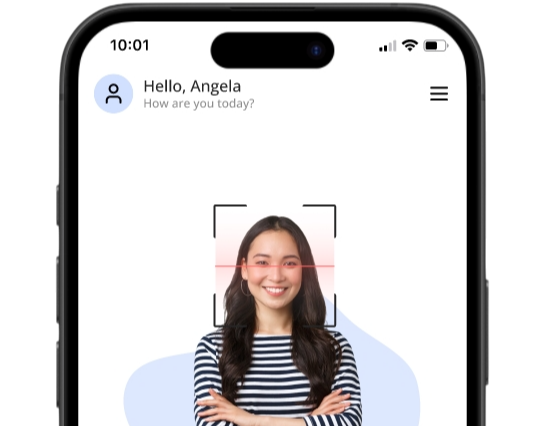
Mobile Health App: Tools for instant patient reports & better prescriptions
Tools for both doctors & patients to perform scans and obtain health reports with cutting edge AI technology.
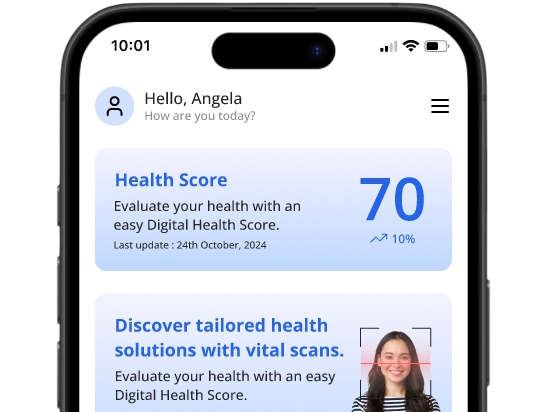
Personalized Reports:
Generates 25 body vitals highlighting health risk for preventive and curative human care.
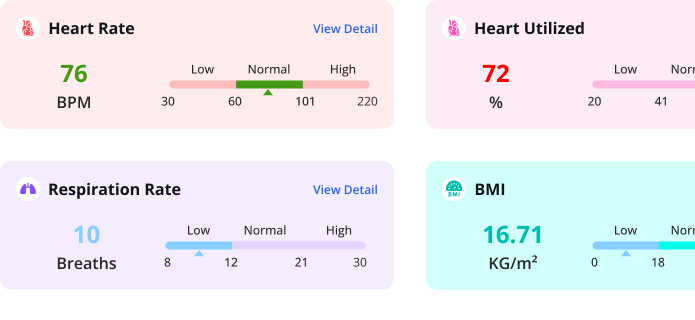
What We Analyze for You
Key Body Vitals
Our system accurately measures four fundamental health metrics: Heart Rate, Respiration Rate, Oxygen Saturation, and Blood Pressure (BP). These core indicators provide a foundational understanding of cardiovascular and respiratory health, essential for early detection of potential health risks.
Heart Health
Detailed cardiovascular assessments include SDNN, RMSSD, PNN50, Cardiac Output, Mean Arterial Pressure, Heart Utilization, Heart Rate Max, Heart Rate Reserve, Target HR Rate & VO2 Max. These parameters offer an advanced evaluation of heart function and aid in proactive heart health management.
Physical Health Indicators
Comprehensive insights into physical well-being are derived from key physiological markers such as Body Mask Index (BMI), Blood Volume, Body Water, Body Fat, and Body Weight. These indicators help assess overall body composition and hydration status, crucial for maintaining optimal health.
Stress Test
Monitoring stress levels is critical for both mental & physical well-being. By analyzing the Autonomic Nervous System (ANS), our system determines how effectively the body regulates stress responses & maintains homeostasis.The test provides Stress Levels (SL) & Stress Index (SI).
Well-being & Health Score
The Well-being Score provides a holistic risk assessment by tracking personal health metrics over time. It integrates essential physical and mental health indicators, offering users a comprehensive understanding of their overall well-being & potential health risks in a % format.
Blood Biomarkers (Diabetes)
The Diabetes Control Score (DCS) evaluates an individual’s diabetes management by assessing blood glucose control. This metric offers insights in maintaining optimal glucose levels by predicting HbA1c Levels (a measure of 3 months average blood sugar).
Simple Steps to Scan
Quickly scan your face using our live scan feature and let the AI-powered system analyze your data. Enjoy fast, secure, and accurate results in real time.
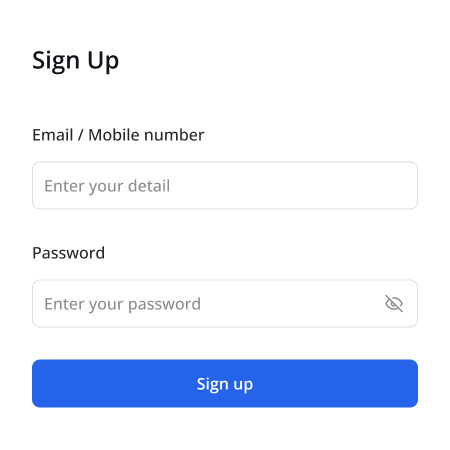
Sign Up
Face Scan
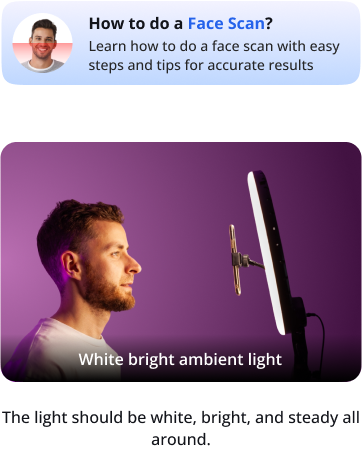

Personalized Report
What Sets Us Apart
Accredited & Quality Assured
The cutting-edge AI too provides a 91-99% accuracy rate. However this tool is designed to serve as a non-invasive first-step screening and just a preliminary aid. It should not be used as a replacement to traditional pathology, diagnostic & laboratory testing
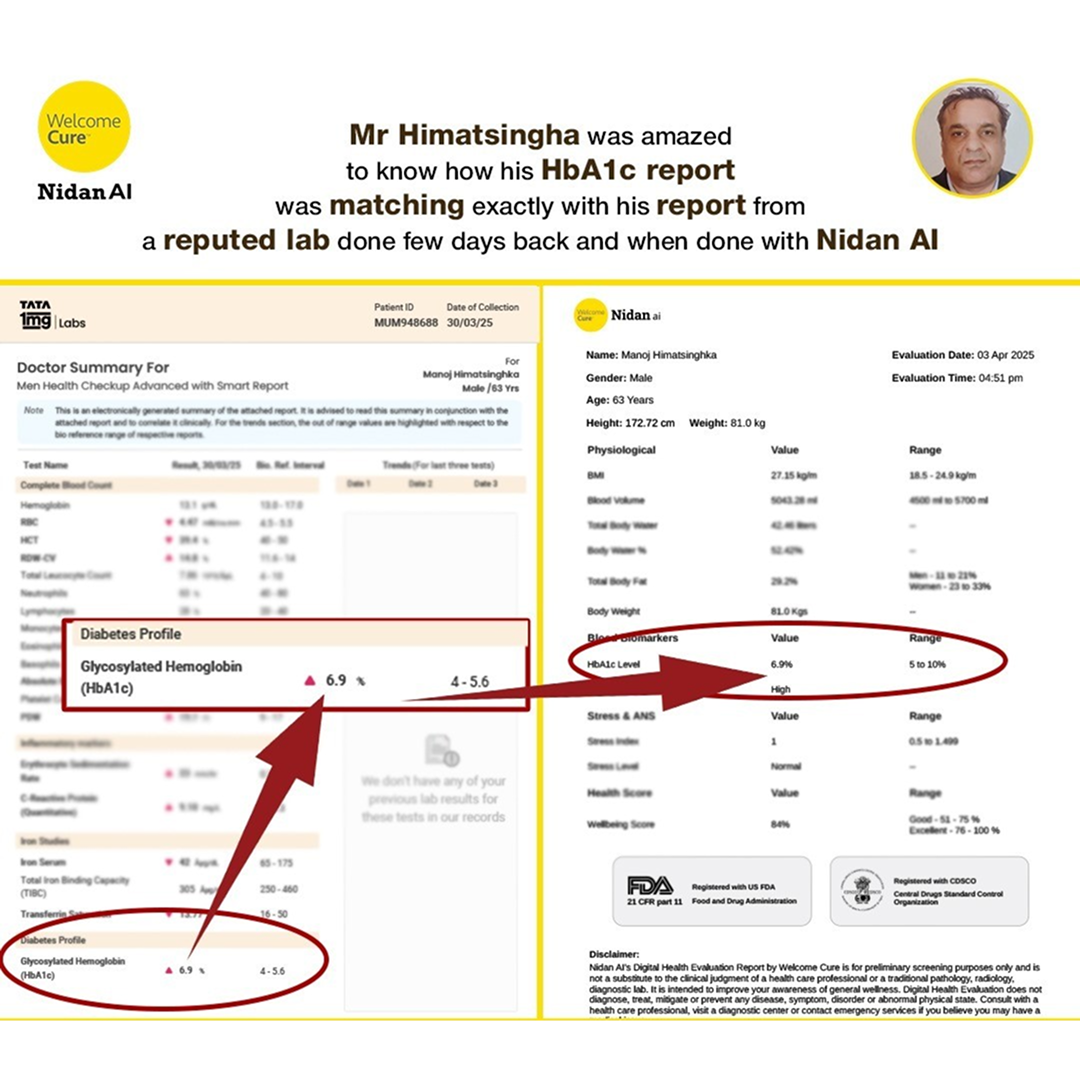
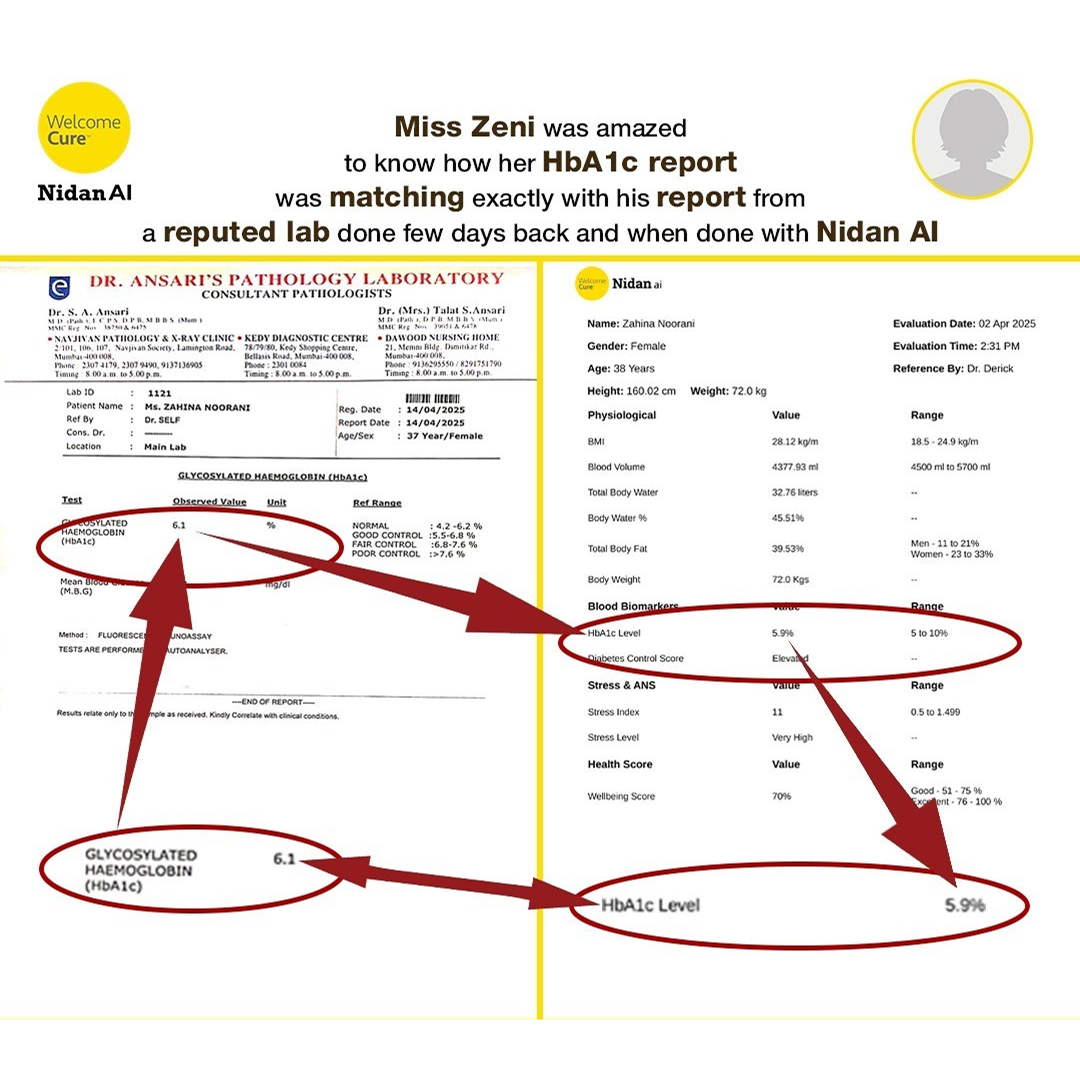
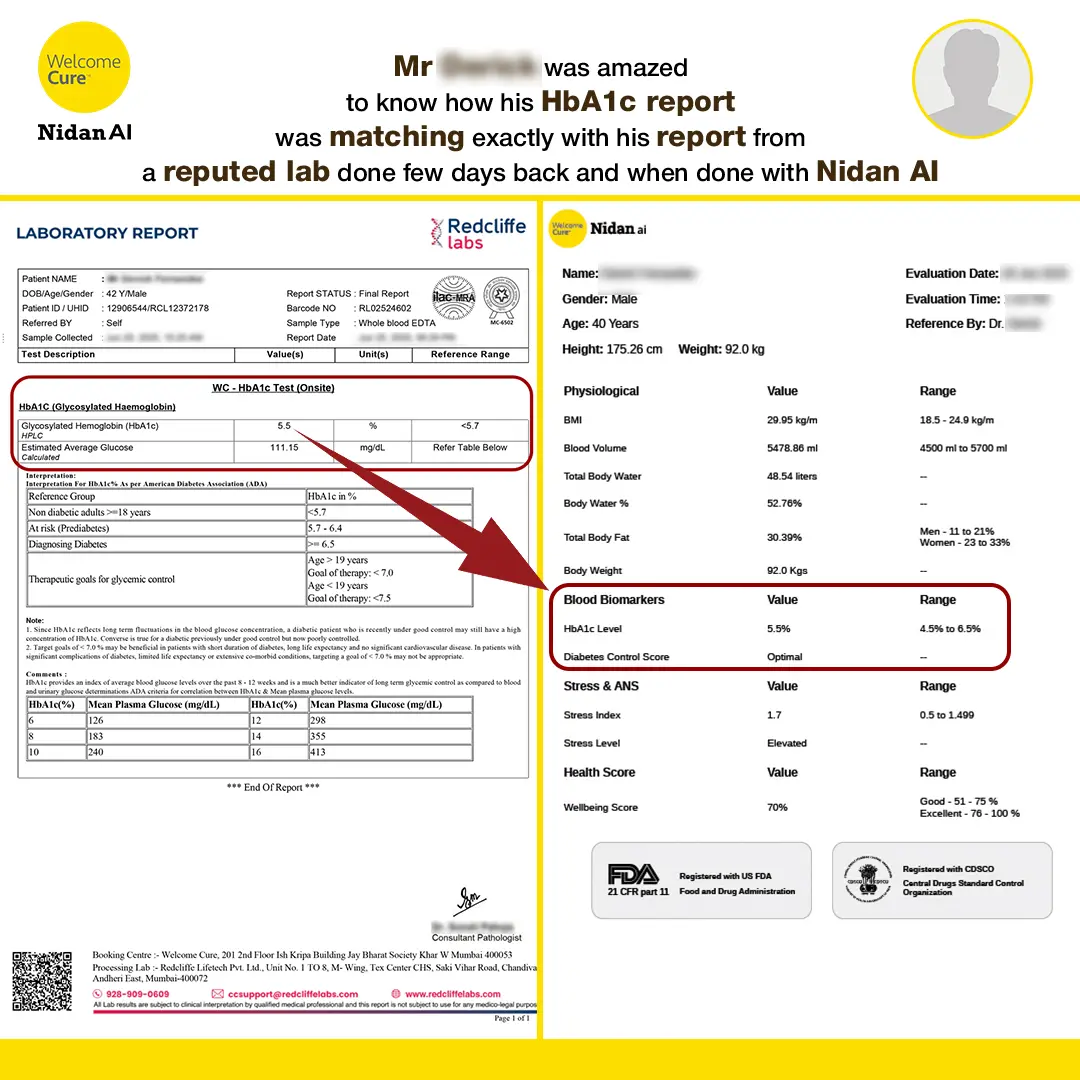
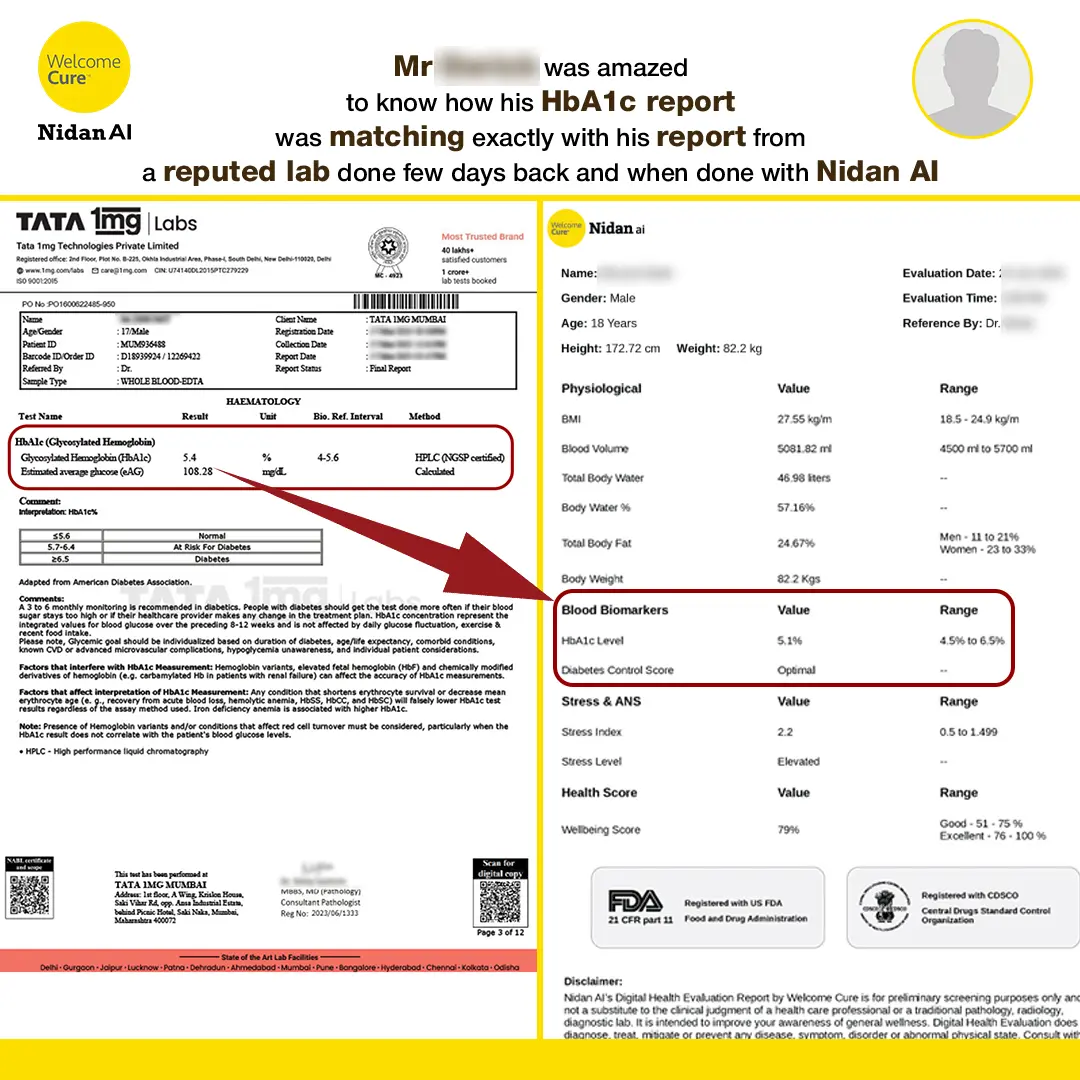

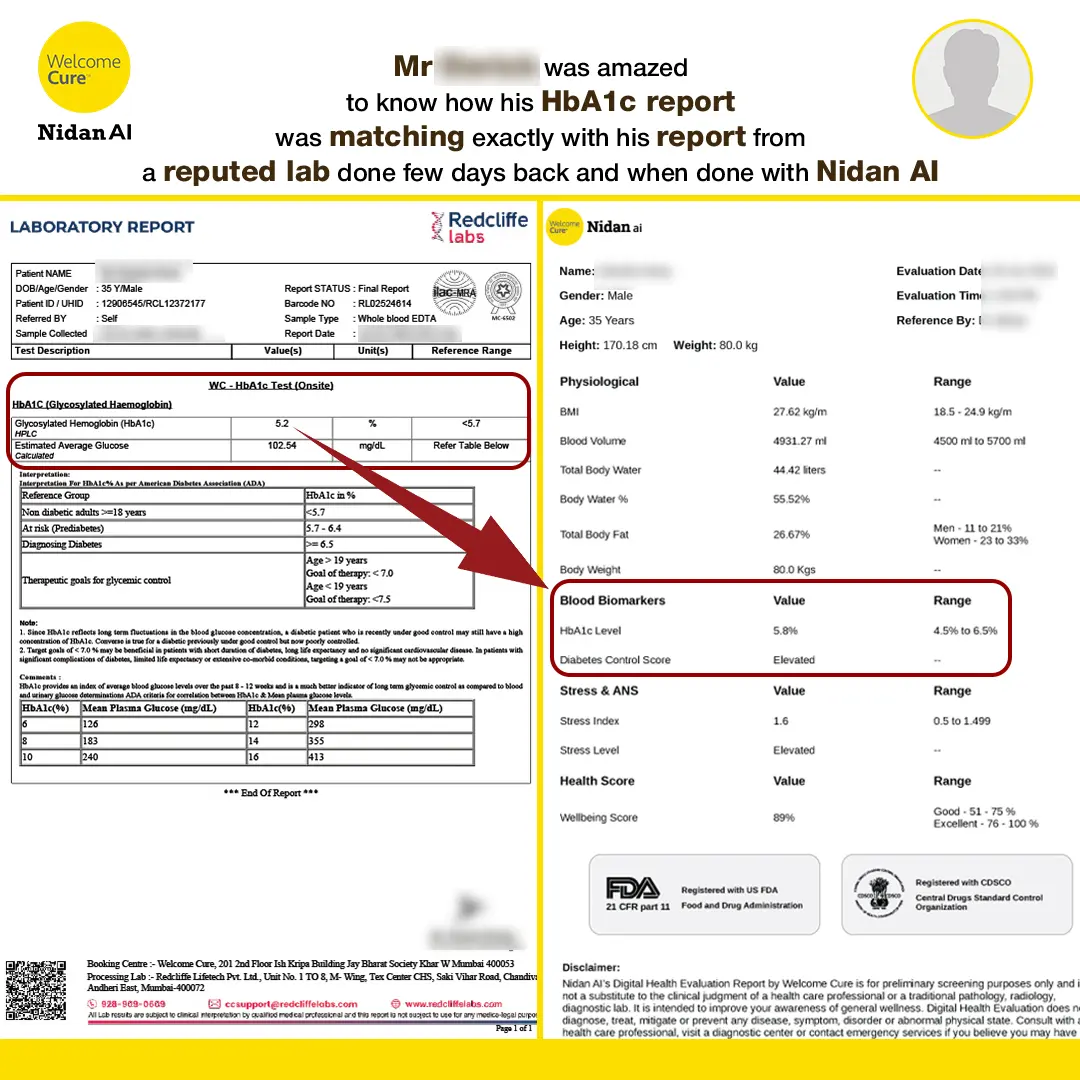
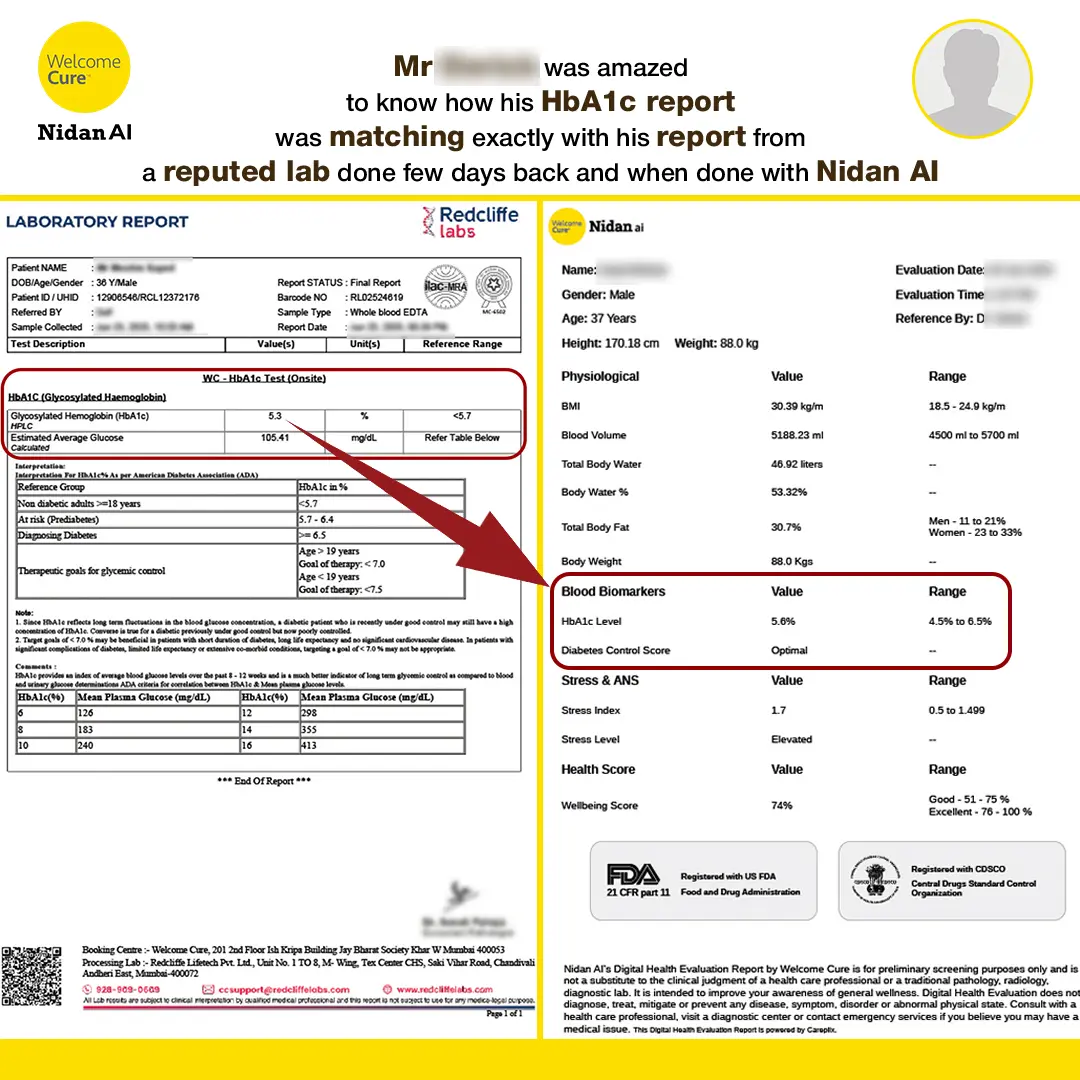
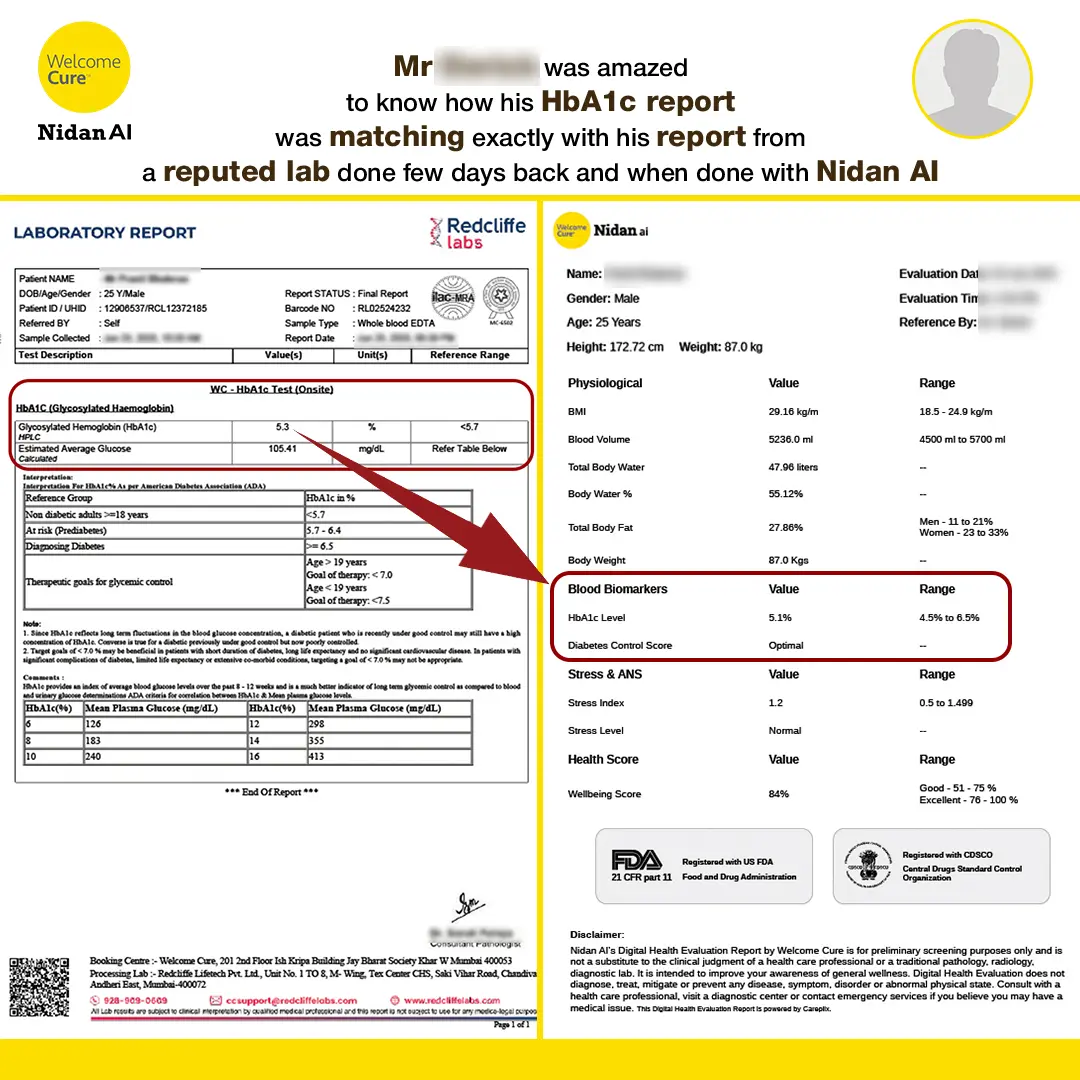
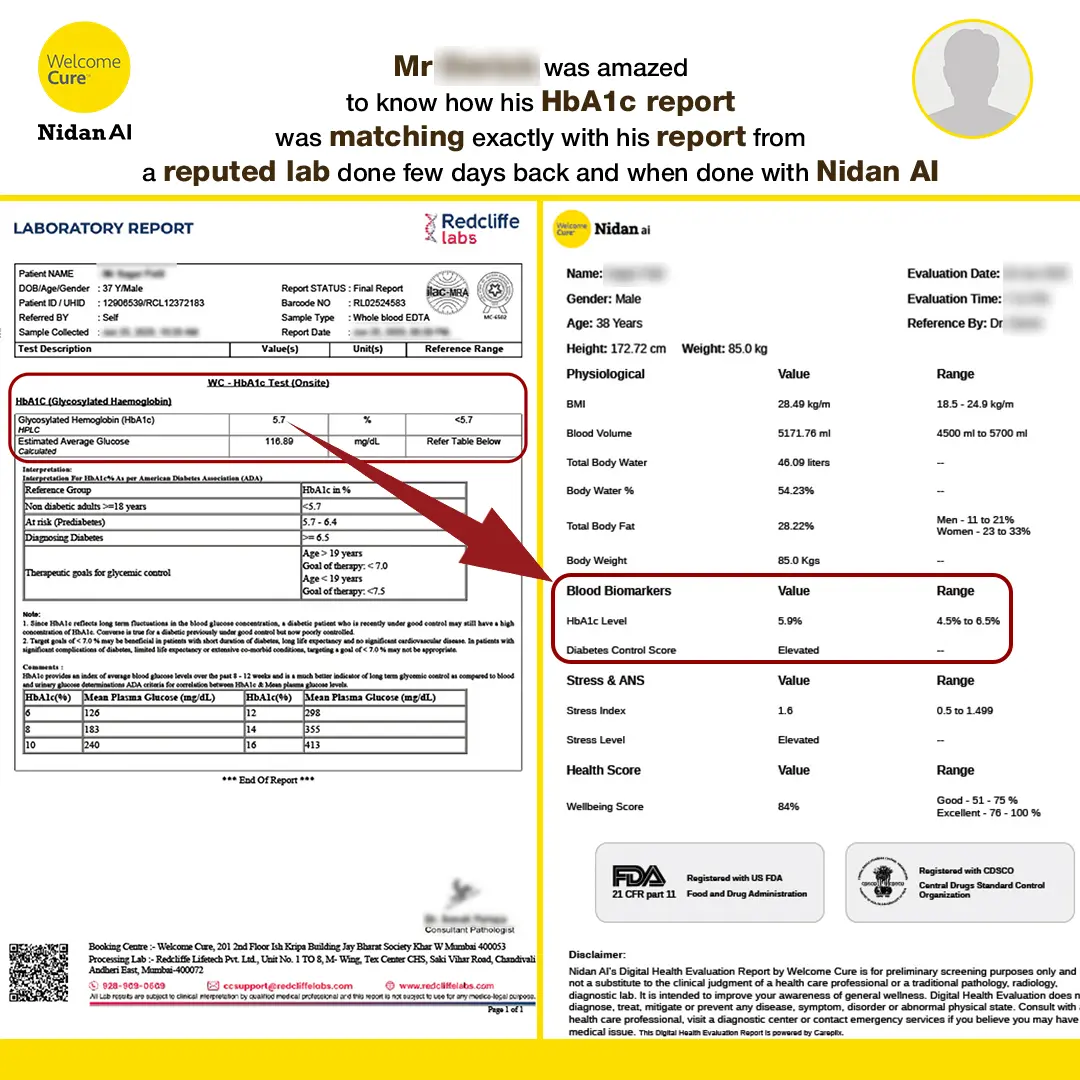
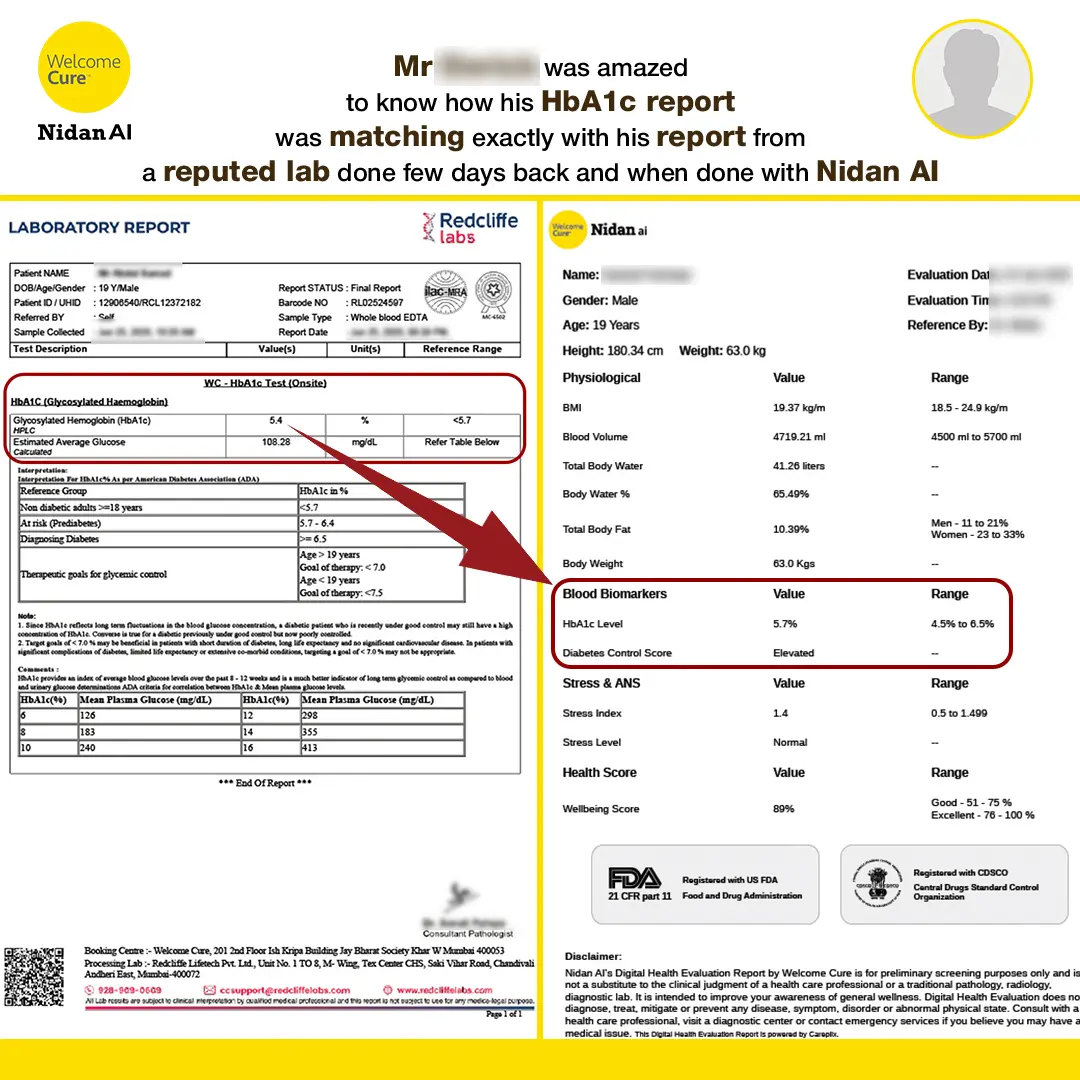
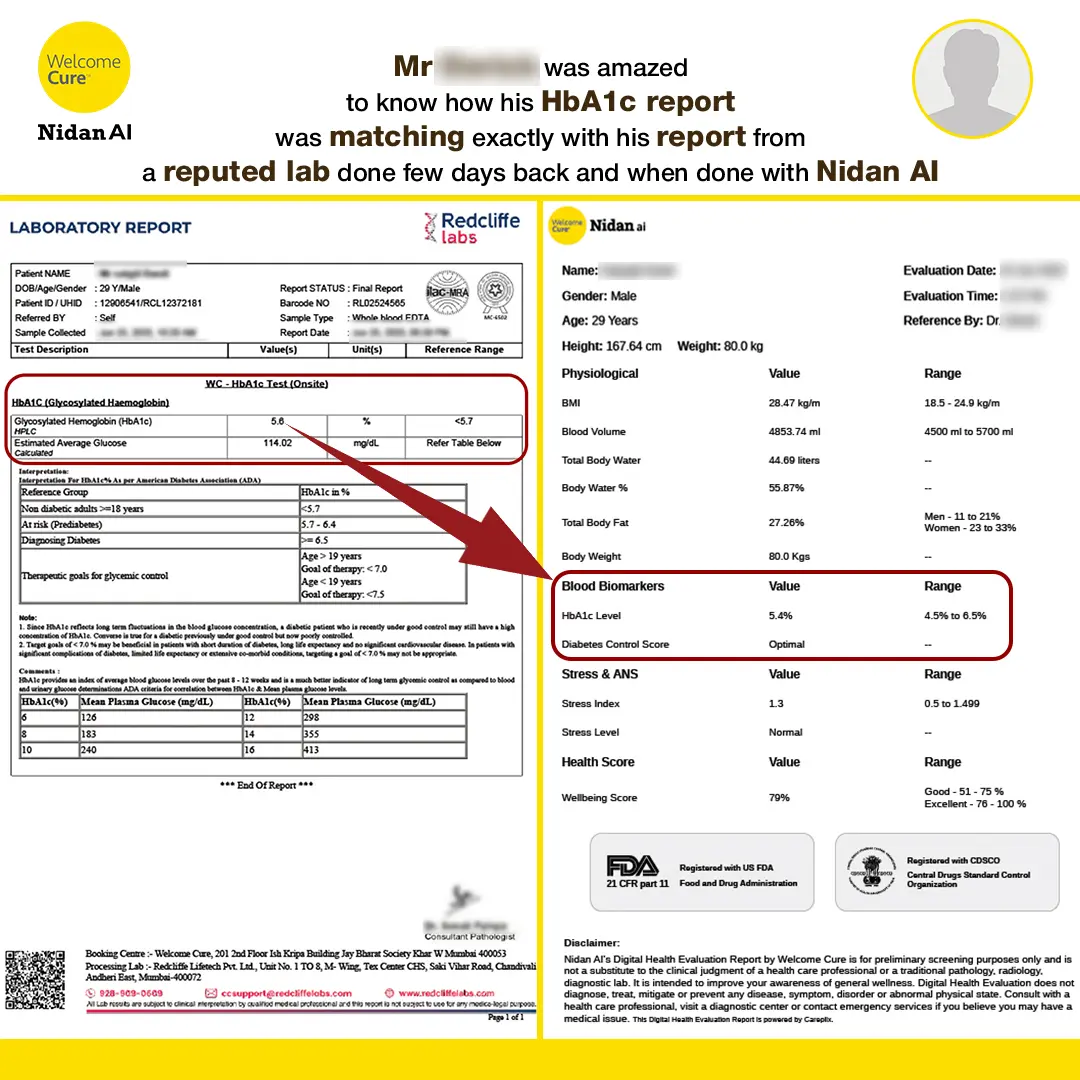
Trusted by Experts
Endorsed by Industry Professionals
Doctor & Patient Reviews
See what our users are saying about Nidan AI.

Mr Veeral - Perrian Jewels (Patient)

Dr Dinesh Tyagi - Ex IAS Officer. Govt. of India. (Patient)

Mr. Madan Mohan - Father of Pravin (Patient)
Most Frequently Asked Questions (FAQs)
What is Nidan AI used for?
This system analyzes facial features using AI to provide health insights and generate detailed reports for preventive care and monitoring. Currently the face scans provides 25 body vitals & parameters including Blood Pressure, Cardiac Markers and Diabetes check via an HbA1c test.
How accurate are the health reports?
Nidan AI uses advanced AI Algorithms trained on medical datasets to deliver reliable insights. While highly accurate, it is not a replacement for professional medical diagnosis and traditional pathology & diagnoistic test. This is an ideal solution for prelimenary, quick and non-invasive assessments.In various clinical trails; it has been found that most parameters & vitals generated by the AI Face Scan is accurate in the range of 91% to 99%.
Is my data secure?
Yes, Nidan AI uses end-to-end encryption and complies with industry and international standards to ensure your data is private and secure. Nidan AI may use the data to analyse group level statistics, analytics and for government or institutional driven public health initiatives.
Do I need any special equipment to use Nidan AI?
No special equipment is needed. A simple smartphone or tablet device with a camera is sufficient along with a sound internet connection.
How long does it take to generate a report?
No special equipment is needed. A simple smartphone or tablet device with a camera is sufficient along with a sound internet connection.
Can I use Nidan AI for telemedicine?
Yes, Nidan AI can integrate with institutional telehealth platforms, allowing you to share reports with healthcare providers. Welcome Cure also has a team of doctors which can help you analyse the reports after the AI Scan for quality guidance and advice on both preventive and curative healthcare.
Who can use Nidan AI?
Nidan AI is designed for individuals, doctors, healthcare providers, wellness practitioners, consumer brands for engaging with their customers and government departments for public health initiatives seeking accurate, quick, quality, and non-invasive health insights.
Can I monitor my health over time?
Yes, Nidan AI saves your scans and reports, enabling you to track changes and trends in your health.
Is it safe for children and elderly users?
Yes, Nidan AI is safe and suitable for users of all ages above 18 years. However, children should use it under adult supervision.
What kind of health conditions can it detect?
Nidan AI identifies general health markers such as stress, hypertension, early signs of certain cardiac issues, diabetes, etc. It does not diagnose diseases. The tool is only for prelimenary investigation so further detailed check-ups could be conducted to establish the health issues more accurately.
Is there a subscription fee?
Yes, Nidan AI operates on a subscription model for doctors, care providers and other institutional partners.
How do I get support if I face issues?
You can contact customer support via the in-app chat or email or by using the contact us section on www.nidan.ai
What is the Technical Working Principal of Nidan AI?
Which 25 parameters does Nidan AI facescan scan give?
Heart Rate: The Heart Rate is the number of times the heart beats in a minute. A normal resting heart rate for adults ranges from 60 to 100 beats per minute.
Respiration Rate: The Respiration Rate is the number of breaths taken in a minute. The rate is usually measured when a person is at rest and simply involves counting the number of breaths for one minute by counting how many times the chest rises.
Oxygen Saturation: Oxygen saturation, also known as SpO₂, is an important measurement used to assess the amount of oxygen being carried by the blood and delivered to the body’s tissues. Normal oxygen saturation range is 95 to 100%.
Blood Pressure: Blood Pressure is a measure of the force that the heart uses to pump blood around the body. Blood pressure is measured in millimeters of mercury (mmHg) and is given as two figures:
Systolic Pressure – The pressure when your heart pushes blood out.
Diastolic Pressure – The pressure when your heart rests between beats.
SDNN: The Standard Deviation of all of the NN Intervals (the time intervals between each heartbeat). Higher numbers usually indicate that your body is coping better with stress.
RMSSD: The Root Mean Square of Successive Intervals between normal heartbeats (RMSSD). RMSSD is obtained by first calculating each successive time interval between heartbeats in milliseconds (msec).
PNN50: pNN50 is the proportion of adjacent N-N intervals differing by more than 50 msec. pNN50 lower than 3% is considered indicative of high risk.
Cardiac Output: The amount of blood the heart pumps through the circulatory system in a minute. Cardiac output in humans is generally 4-8 L/min at rest.
Mean Arterial Pressure: MAP is the average arterial pressure throughout one heart cycle. A MAP between 70 and 100 mmHg is considered to be normal.
Heart Utilisation: Heart Utilisation is the percentage of overall heart usage relative to its maximum peak heart rate. Generally, < 50% utilisation at rest and 51 – 85% utilisation at moderate intensity is considered normal.
Heart Rate Max: Your Heart Rate max is the number of beats per minute your heart can reach during exercise. It is possible to exceed the upper limit of your zone without any ill effects, as long as you do not have coronary artery disease or are at risk for a heart attack.
Heart Rate Reserve: Heart Rate Reserve is the difference between your maximum (peak) heart rate and your resting heart rate.
Target Heart Rate: To achieve a certain level of exertion, there is a minimum number of heartbeats required within a specific timeframe.
VO2 Max: VO2 Max is the amount of oxygen the body uses during exercise. It is a measurement to assess physical fitness.
BMI: BMI is the measure of body fat based on height and weight. The normal range of BMI is 18.5 – 24.9 kg/m².
Blood Volume: Blood Volume refers to the amount of blood present in an individual’s circulatory system. The average human adult has nearly 4.5 – 5.7 Liters of circulating blood.
Total Body Water & Body Water Percentage: Total Body Water is the amount of water present in the human body. This includes fluids both inside and outside of cells. An adult body water percentage should fall between 40% and 60%.
Total Body Fat Percentage: Body Fat Percentage is basically the proportion of the mass of fat in our body relative to the total mass of our body.
Body Weight: Body weight refers to the total mass of a person’s body, which is composed of various tissues, such as bones, muscles, organs, and body fat.
Diabetes Control Score: The Diabetes Control Score (DCS) is a numerical value used to assess how well an individual is managing their condition and maintaining optimal blood glucose levels. It provides insight into the effectiveness of diabetes management strategies.
HbA1c level: HbA1c (Hemoglobin A1c) is a measure of average blood sugar levels over the past 2 to 3 months. It indicates long-term glucose control and helps in diagnosing diabetes or monitoring its management. A normal HbA1c level is typically below 5.7%, while prediabetes ranges from 5.7% to 6.4%, and diabetes is diagnosed at 6.5% or higher. Maintaining a healthy HbA1c level reduces the risk of diabetes-related complications.
Stress Level: The body’s reaction to a challenge or demand. There are 5 levels of stress.
Stress Index: Stress is the reaction to everyday pressure due to emotional or physical tension. Stress Index < 1.5 is considered to be normal.